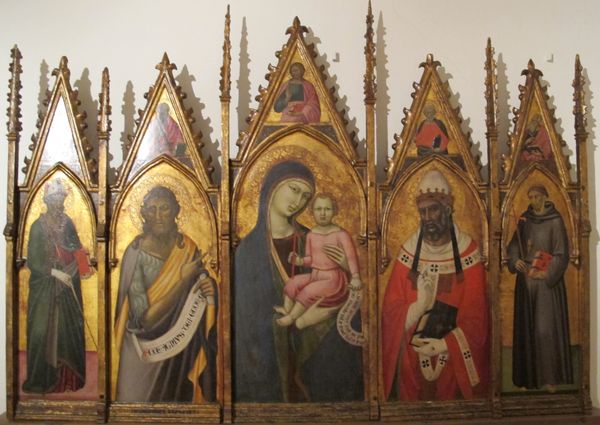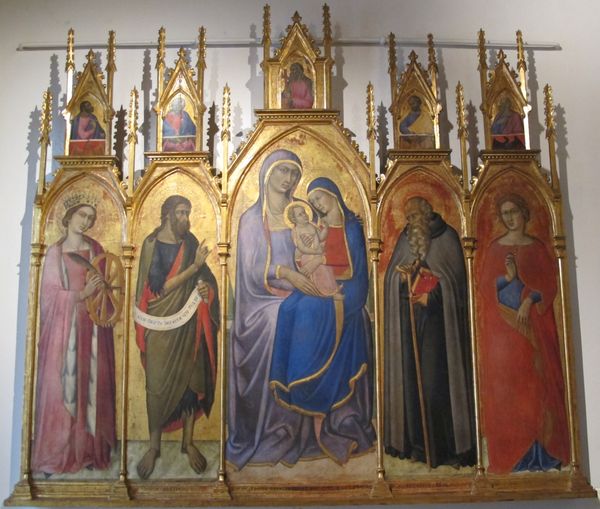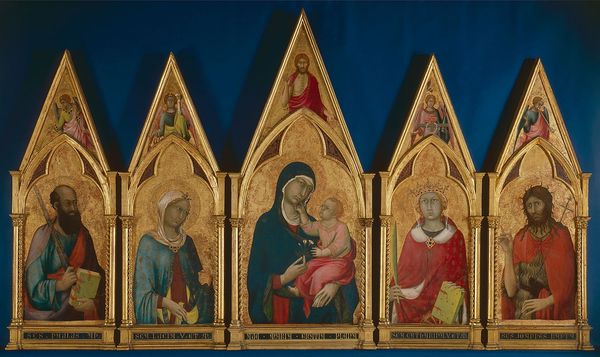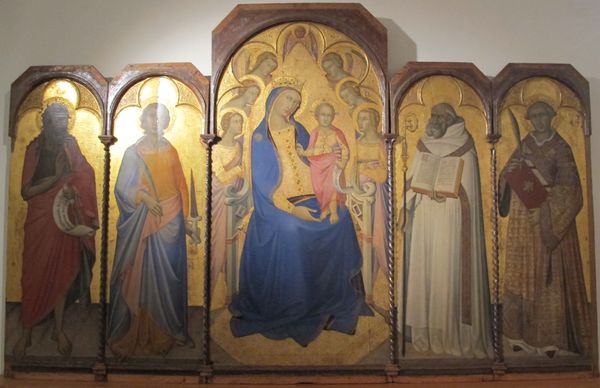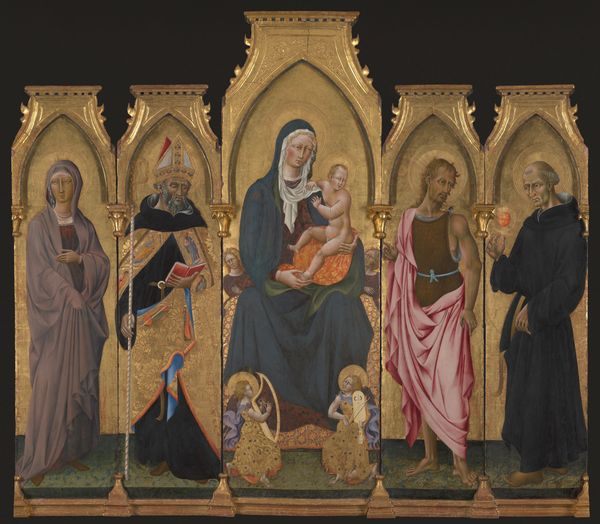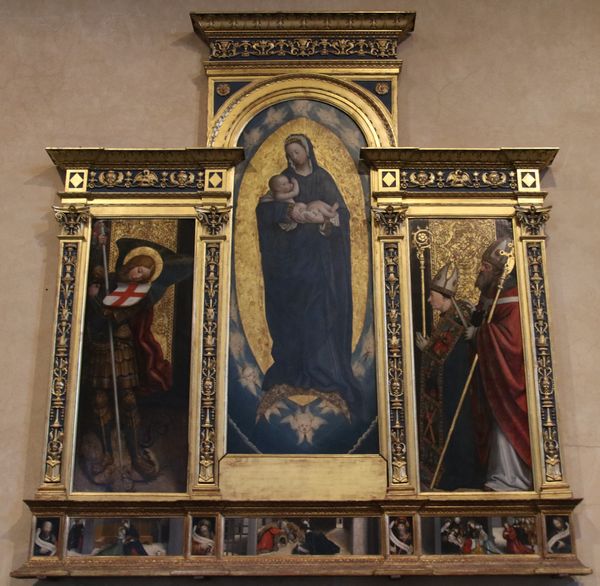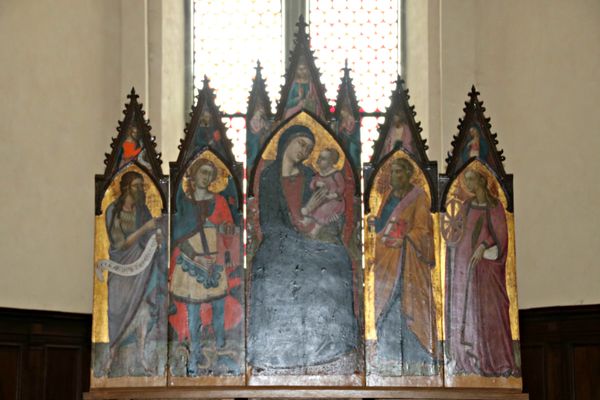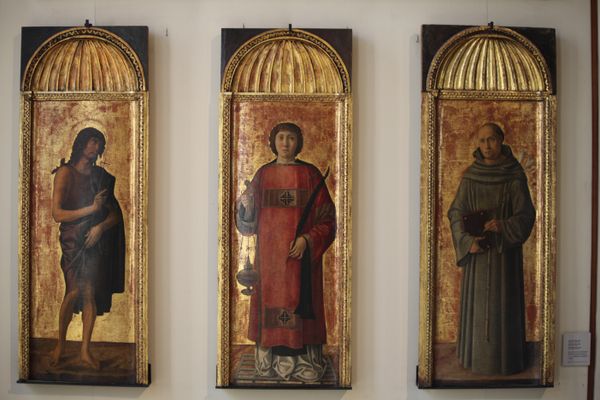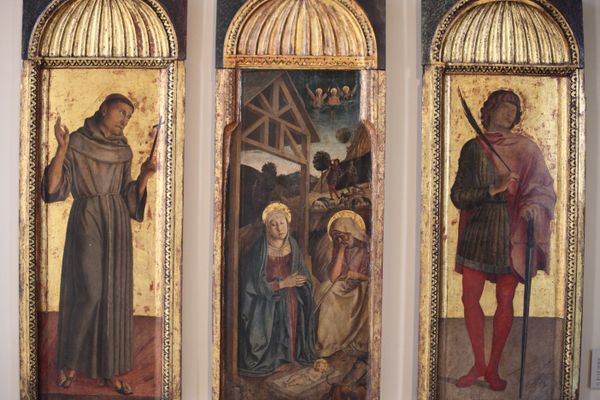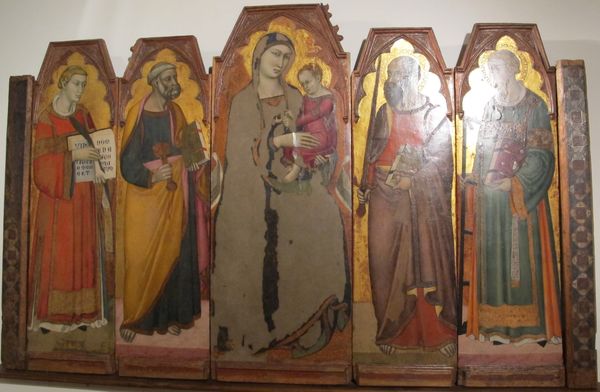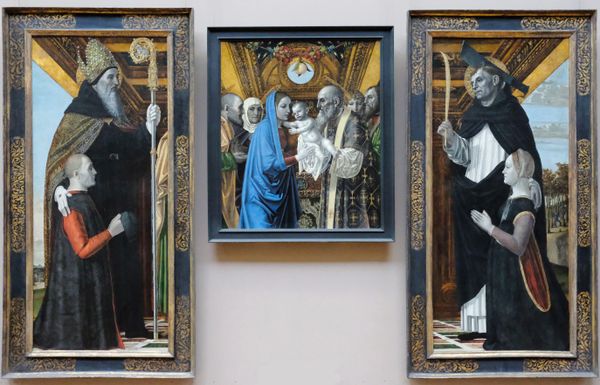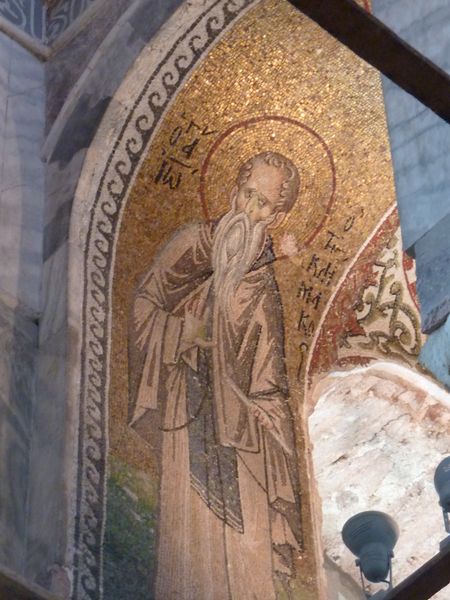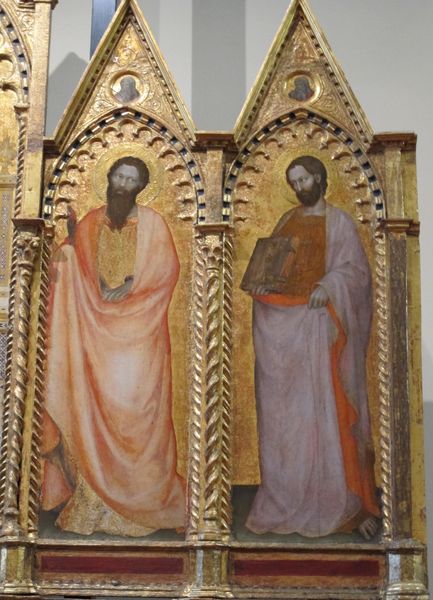
panel, tempera, painting, oil-paint
#
portrait
#
panel
#
allegory
#
tempera
#
painting
#
oil-paint
#
oil painting
#
history-painting
#
academic-art
#
italian-renaissance
#
early-renaissance
Copyright: Public domain
Curator: Here we have a "La Vierge et l'Enfant" by Francesco Botticini, painted on panel with tempera and oil paint. It is categorized within the Italian Renaissance style. What strikes you about this piece at first glance? Editor: It has such an immediate feeling of stillness, almost frozen. The faces are all quite serious. But it is also really gilded, so despite the initial impression of restraint, it appears like an expensive object. Curator: Botticini indeed emphasizes that formality typical of Renaissance sacred art. Note the use of panel and gold leaf. Do you see any link to traditional approaches to material in altarpieces in its craftsmanship? Editor: Absolutely. And this triptych format underscores the devotional purpose of such objects; but look at the Virgin’s drapery—how much pigment went into that cloak, let alone the cost of labor? Such blue hints at patronage that may have wanted their wealth known. Curator: Exactly. The preciousness of the pigments contributes to the perception of divine figures removed from earthly struggles. And it makes me wonder—what are your feelings about the depiction of motherhood, especially as idealized in this early Renaissance piece? Editor: To be honest, it seems really awkward, like posing with an object. There is a definite artificiality, a crafted display, I believe this detracts from what would feel real for a scene like this. Though I get that such wasn't what Botticini was attempting. Curator: I understand. However, don’t you think the deliberate artistry of this painting conveys something meaningful, beyond a mere rendering? Think about what it symbolizes. Editor: I do see what you mean about symbolism: the labor-intensive methods contribute an implicit element of reverence. Looking more closely at Botticini's technical artistry with paint is still something to explore about its material being. Curator: A fresh look indeed. Sometimes it requires considering artistic intent and historical context to fully see through our present mindset. Editor: It seems like the art captures this sort of early understanding—there is an appeal of the otherworldly and divine at first view that later shows hints of everyday artistic decision. A kind of material faith made manifest, I guess?
Comments
No comments
Be the first to comment and join the conversation on the ultimate creative platform.
